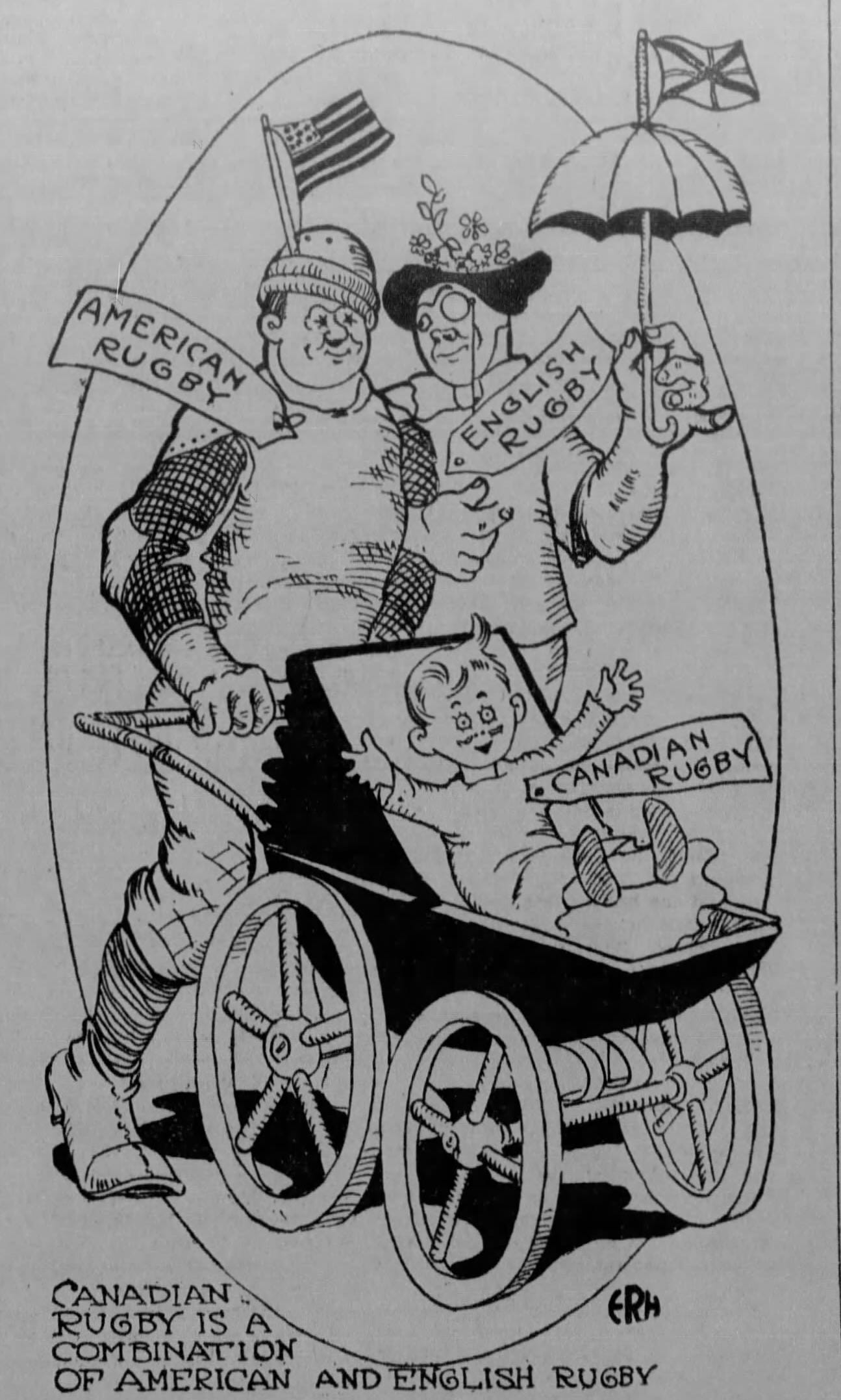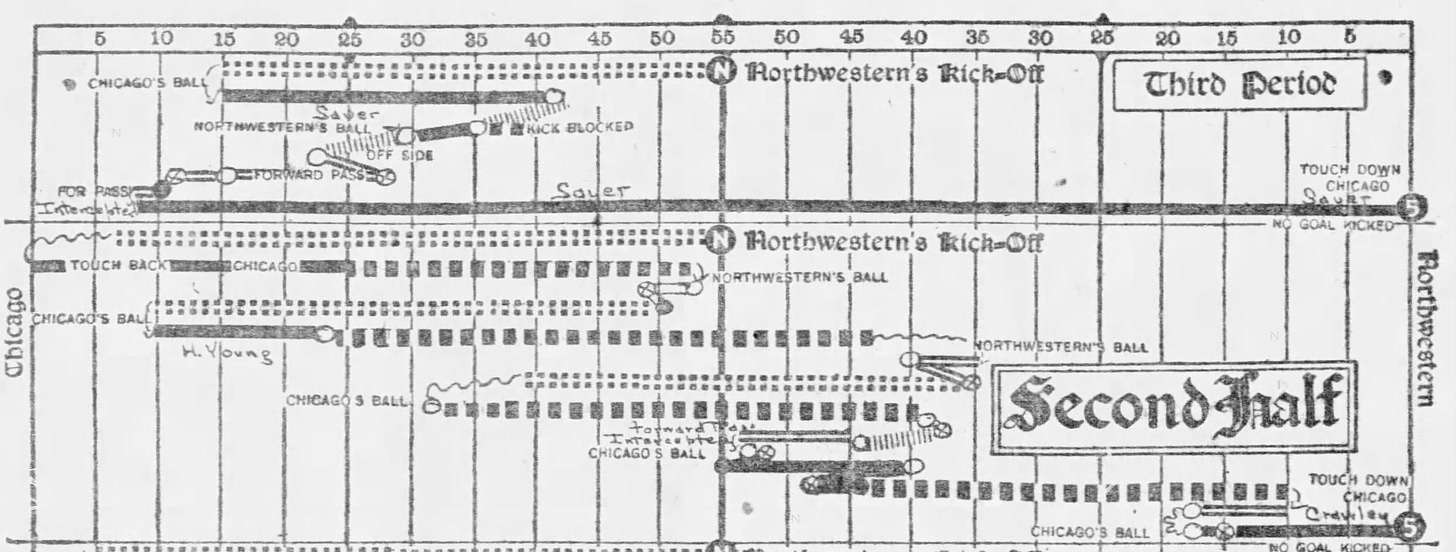Today's Tidbit... The Point of No Return
At several points in football's history, the rulemakers have tried to encourage risk-taking by the offense. For example, from the mid-1910s through the 1920s, various coaches sought ways to incorporate more rugby-style lateraling into their offenses.
In the mid-1910s, Canadian rugby combined elements of American football and English rugby. Since it did not yet allow blocking or the forward pass, rugby style laterals were a primary means of advancing the ball on the ground.

Their methods caught the eye of Yale's Frank Hinkey in 1914, when, as the new coach there, he visited a Canadian rugby team or two and invited some of them to watch Yale's football practices and games, trying to pick up a few ideas.
Hinkey attempted to incorporate laterals into Yale's offense, with limited success, ultimately leading to the team captain firing him at midseason in 1915.
Hickey's greatest contribution as a coach proved to be his introduction of the term "lateral" into American football's lingo. Before that, all ball exchanges were "passes," and only the newer kind were forward passes.
After Hinkey, there were periodic efforts to encourage lateraling, but the conservative side of coaches caused them to fear the dreaded "Scoop and Score." Finally, the rule makers chose to lessen the gamble with a 1929 rule that prohibited defensive players from advancing fumbles. So, an offense might lose the football, but they could not lose additional yardage or have points scored on a return.
A similar fear arose in the early days of the forward pass, given the potential for an interception return for a touchdown, what we now call a Pick Six.
An example of a Pick Six occurred in the 1910 Chicago-Northwestern game, with the score tied 0-0 in the third quarter. Northwestern was on Chicago's 10 yard line when they threw a pass that was intercepted by Chicago's Sauer at the 5-yard line, after which he raced 105 yards for the only touchdown of the game.

A few days later, Walter Eckersall, the former Chicago player and Chicago Tribune reporter wrote about that play and others that occurred in the Brown versus Harvard and Cornell versus Vermont Games that weekend. His primary point was that coaches needed to incorporate a safety man or strategy into forward passing plays to protect against the Pick Six. He specifically noted that the Northwestern quarterback did not run toward the ball after he passed it, so he was not in a position to tackle Sauer during his return. Eckersall's point was not unique, as pass play diagrams of the era frequently identified a designated player as the safety man.
Interestingly, a recommendation made to the 1911 Rules Committee called for allowing interceptions to be returned only as far as the original line scrimmage. The recommendation supported the desire for more forward passing by limiting the damage that could result from an errant pass.
The 1911 Rules Committee did not adopt the recommendation, and the idea does not appear to have garnered further discussion, so football never reached the point of no return with interceptions. However, it did so with fumbles in 1929, and the no-advancing-fumbles rule remained in place in college football until 1990.
Click Support Football Archaeology for options to support this site beyond a free subscription.




Arkansas State ran the wishbone in the 80’s and I was often grateful defense couldn’t advance fumbles 😄